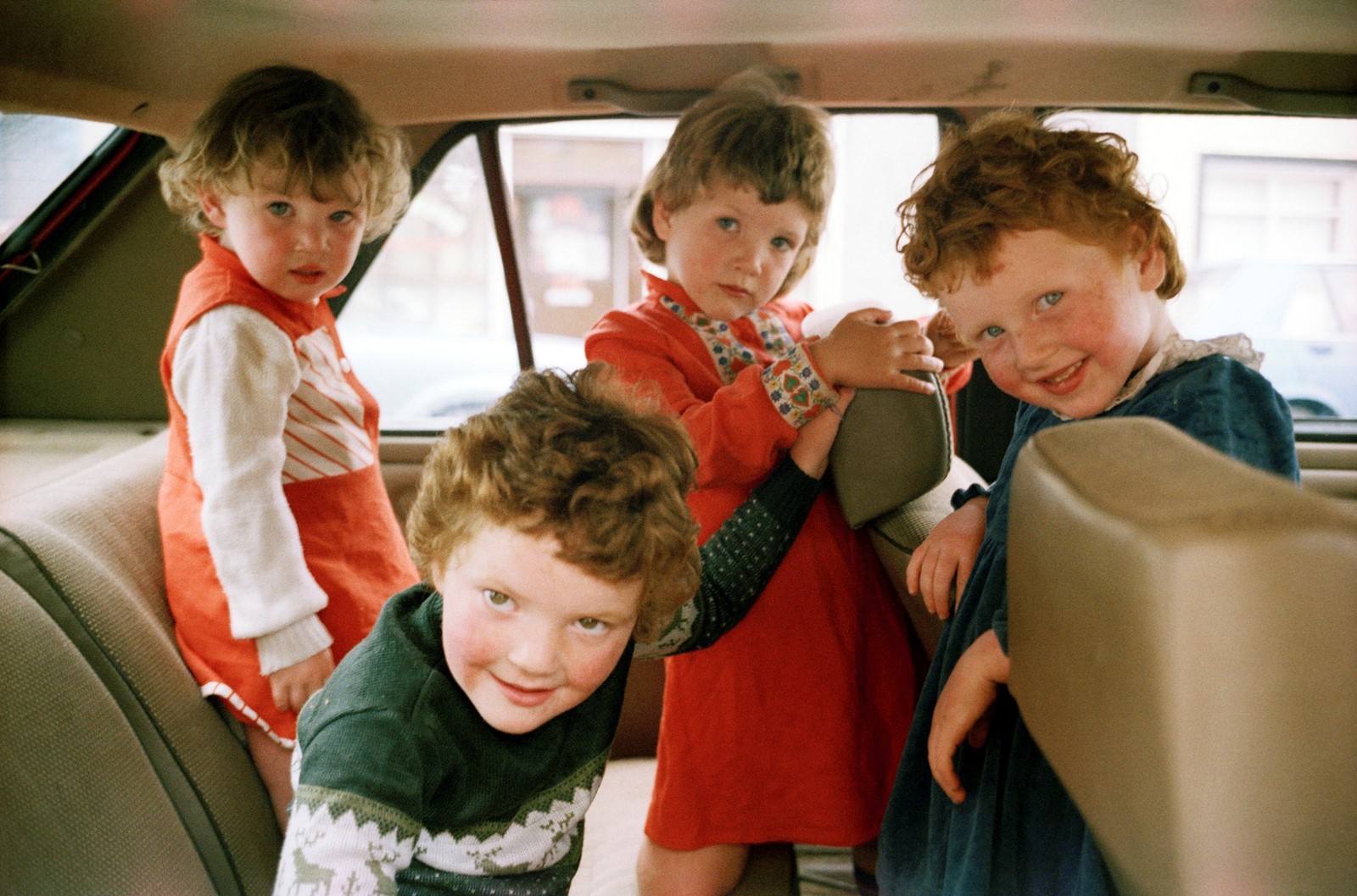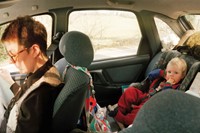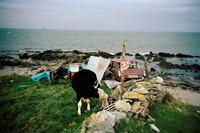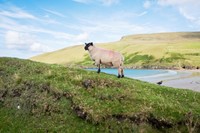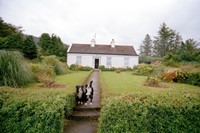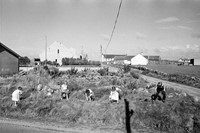Tom Wood is often labelled a “Liverpool photographer”. Indeed, no one imaged Liverpool more devotedly than he did during Thatcher’s reign and its aftermath. “Photie man!” the Merseysiders nicknamed Wood, who became something of a local landmark. He went on to make indelible images of the places people came together (and sometimes looked for love): the riotous Chelsea Reach Disco, the teeming Great Homer Street Market and the criss-crossing double-deckers which picked up toddlers, pensioners and everyone in between.
There is, however, a parallel history to Wood’s Liverpool work, now collated in a 280-page publication: Irish Work. Spanning the period of 1972 to 2019, these photographs are highly-personal records of Wood’s annual returns to County Mayo in the west of Ireland, the land from which his Catholic mother and Protestant father were forced to emigrate in the 1950s due to religious intolerance. While Wood’s books have always felt Dickensian in spirit – gravitating around working-class people doing good amid social and economic strain – Irish Work possesses a distinctly Joycean quality; not only in its palette of greys and greens, scenes of senility and small dramas, but in its free-flowing stream of consciousness. Renouncing chronology, its sequences see-saw between colour and black-and-white, portrait and panorama and people and places; fragments which are all swept up by the moody stare of Nephin Mountain, never far from view.
“The Mayo landscape has always had an unprepossessing element,” says Wood. “Initially, I had felt there wasn’t a lot to be photographed there. But I had my ‘familiar’ landscapes, and these fields meant a great deal to me. Since returning in 1972, I’ve hardly missed a year. There must be some nostalgia involved, but I feel there’s something more vital at work too.” An eloquent chronicle by an insider-turned-outsider, Irish Work attests to Wood’s uncanny ability to get inside a scene; to deliver photographs that are imbued with sentiment, but never sentimental. Here, Wood walks us through his rural odyssey and the stories which shaped it.
“When my Protestant mother married my Catholic father, her family stopped communicating, her friends avoided her on the streets and the priests, who were all so powerful, ‘blackened out the church windows’. She ran away to England, but no one knew where to. My father wasn’t able to look after both me and his farm, so I went to live with Granny and Uncle Norman on their farm in Cloonamine, on the edge of Loch Conn and overlooked by Nephin, the highest stand-alone mountain in the land.
“Ireland in the early 50s hadn’t changed much since the 19th century. My mother had gone to school in bare feet. It was a world of horse and cart, candles and ‘Tilley’ lamps, crossing fields to the well for water, an open fire to cook on, sheep, cattle, one pig, turkeys, chickens, ducks down at the stream. Granny would bake the bread, churn the butter, pluck the chickens. In 1954, my mother was found, but she refused to return to Ireland. I left Ireland with my father, and moved to Cowley, the car factory side of Oxford. My parents reunited and had three more children together. My father spent the next 40 years working in Morris Motors, but living for his long, annual holidays back home in Ireland.
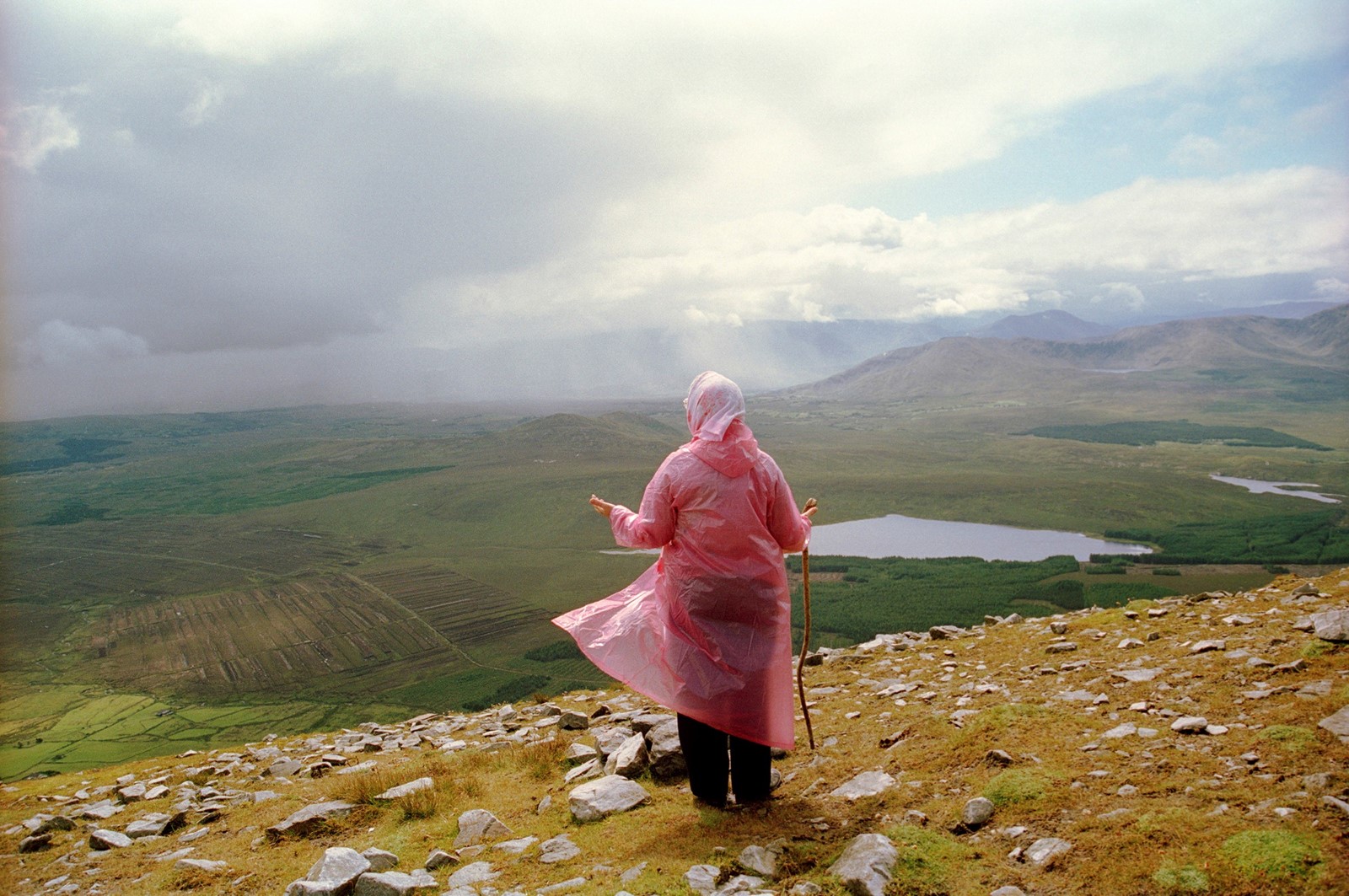
“I would return home with him: boat train to Holyhead, stay with family in Dublin and drive to the west; Ford Consul, Madonna on the dashboard, with two or three other Irish men travelling home. It was exactly as in Paul Durcan’s poem Going Home to Mayo, Winter 1949: each town we passed was ‘a magic password into eternity’. During Christmas 1972 – while I was studying Fine Art Painting – I had a camera with me and began to photograph constantly. Everything seemed to have some meaning. Cloonamine had hardly changed and my father’s farm hadn’t been touched since he left for Oxford. It was a kind of nature reserve where deer and rabbits ran wild. Being alone on a hillside or a field I had walked as a child was a powerful feeling. These places took you out of yourself; photographing took you out of yourself. There was no sense of time or separation, but more of a sense of this is what formed me. Yet, for a long time, I didn’t want to understand this and break the spell. I would just photograph the same fields over and over, year after year.
“For me, photographing Ireland through the car window was the same experience as photographing from a bus in Liverpool (a city once called the capital of Ireland). While I have the same excitement for both of these subjects, with the Ireland work, there’s this strong emotional dimension; an intensity that hasn’t really changed over the years, although Ireland itself has changed. Back in the early 70s and 80s, the place was nearly empty. So many people had emigrated. There was a kind of bittersweet feeling there: the sadness related to all those who had left and yet my joy of being ‘back home’. I feel like a different person when I’m there, and some of my relatives still call me ‘Tommy’. After Ireland joined the European Union, grants for farmers became available and life started to change. Then we arrived at the Celtic Tiger – the economic boom of the mid-90s – and people began returning to Ireland to live there.
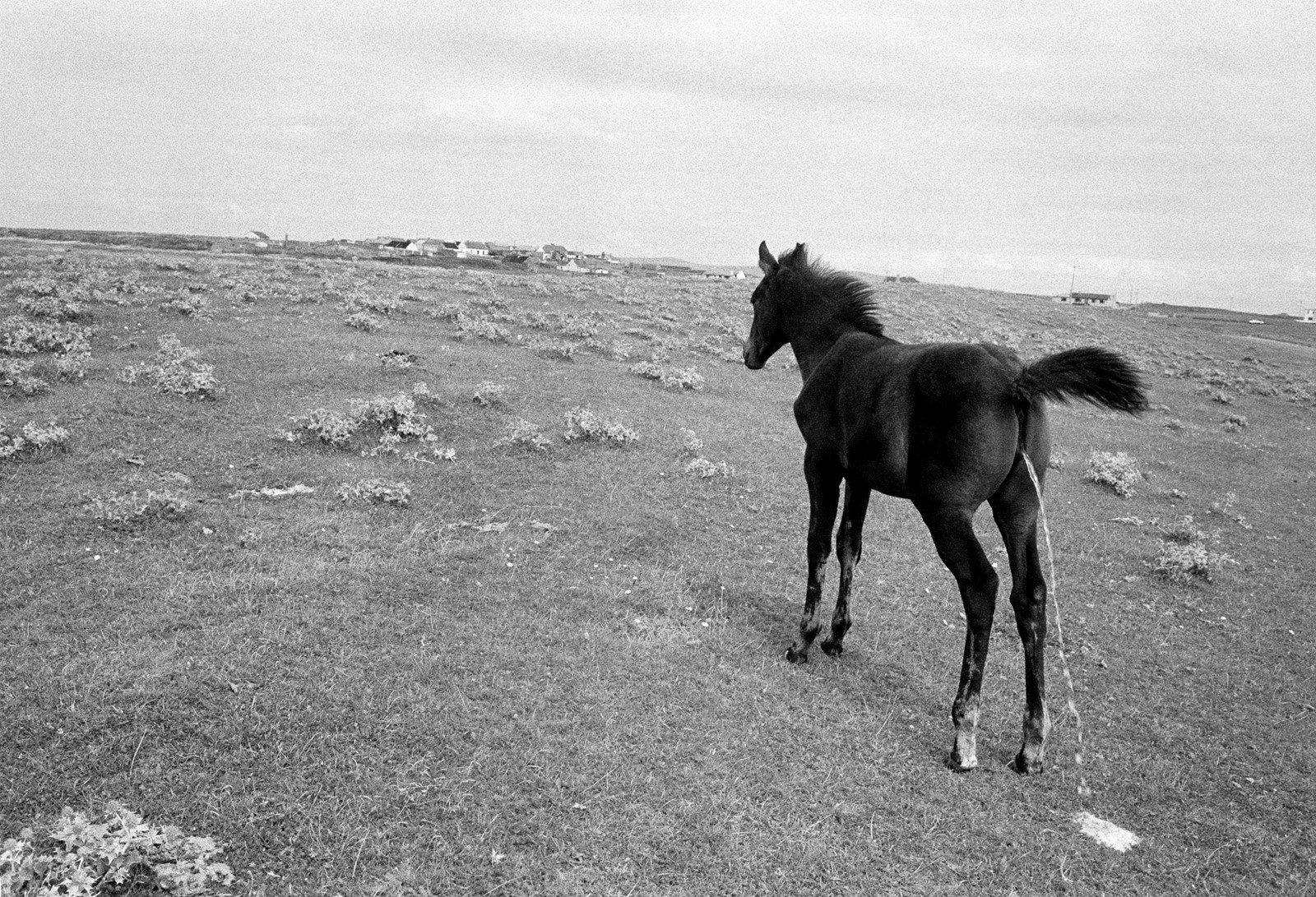
“Chris Killip had a similar passion for photographing Ireland (his mother’s homeland). But by the early 2000s, we both agreed that much of the ‘magic’ which had drawn us there had disappeared. A large part of that loss was the passing of our parents’ generation. They still had one foot in medieval days and thought in a completely different way. And for their parents, the Great Famine and mass emigration of the 19th century was still in living memory. The emigration continued at a steady rate throughout the 20th century. In the 80s and 90s, I would come across empty homes everywhere, often full of a lifetime’s accumulations. Sometimes, when an older farmer passed away, the land would lie unclaimed because it was worth so little. It was with a 5x17cm negative revolving panoramic camera that I photographed these abandoned interiors.
“However, my impulse has never been that of a documentarian. Seamus Heaney once spoke about the need for a poem to be ‘transformative’, not simply presenting reality. In other words, one must somehow outstrip the conditions even as they observe them. In my mind, there has always been the idea that any concluding statement of the work should be ‘helpless’, and this goes right back to my painting days. I saw a small retrospective of Jasper Johns paintings at the Museum of Modern Art Oxford. I was knocked out by the exhibition and memorised something he had said: ‘The final statement has to be not a deliberate statement but what you can’t avoid saying’. His words, in turn, reminded me of what the physicist Richard Feynman had once posited: ‘What can you explain that you didn’t set out to explain?’”
Irish Work by Tom Wood is published by RRB Photobooks, and is out now.
